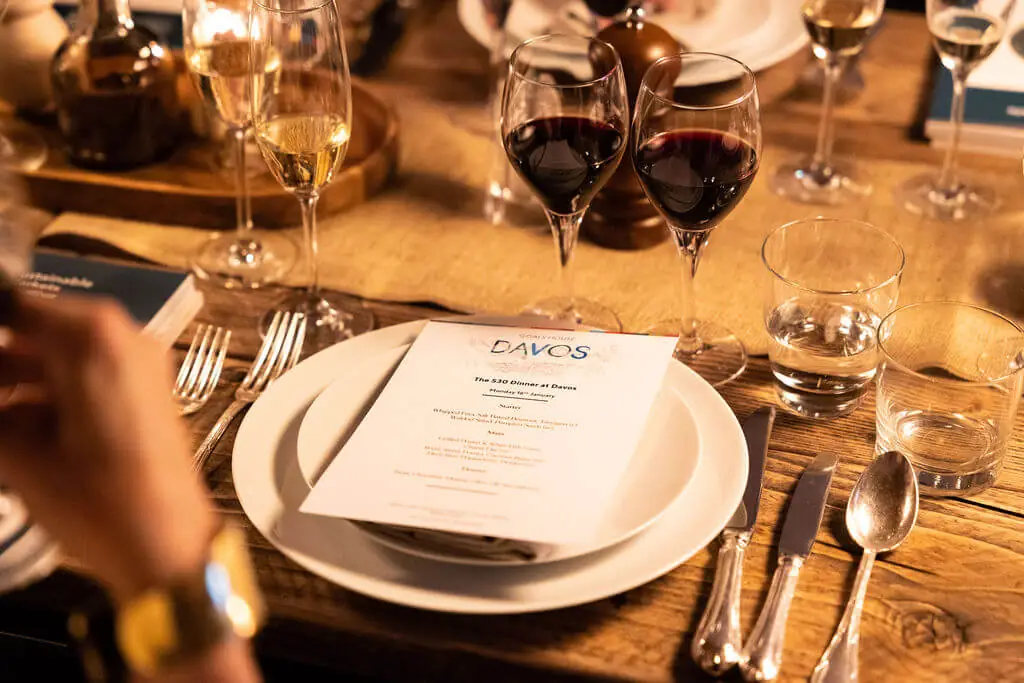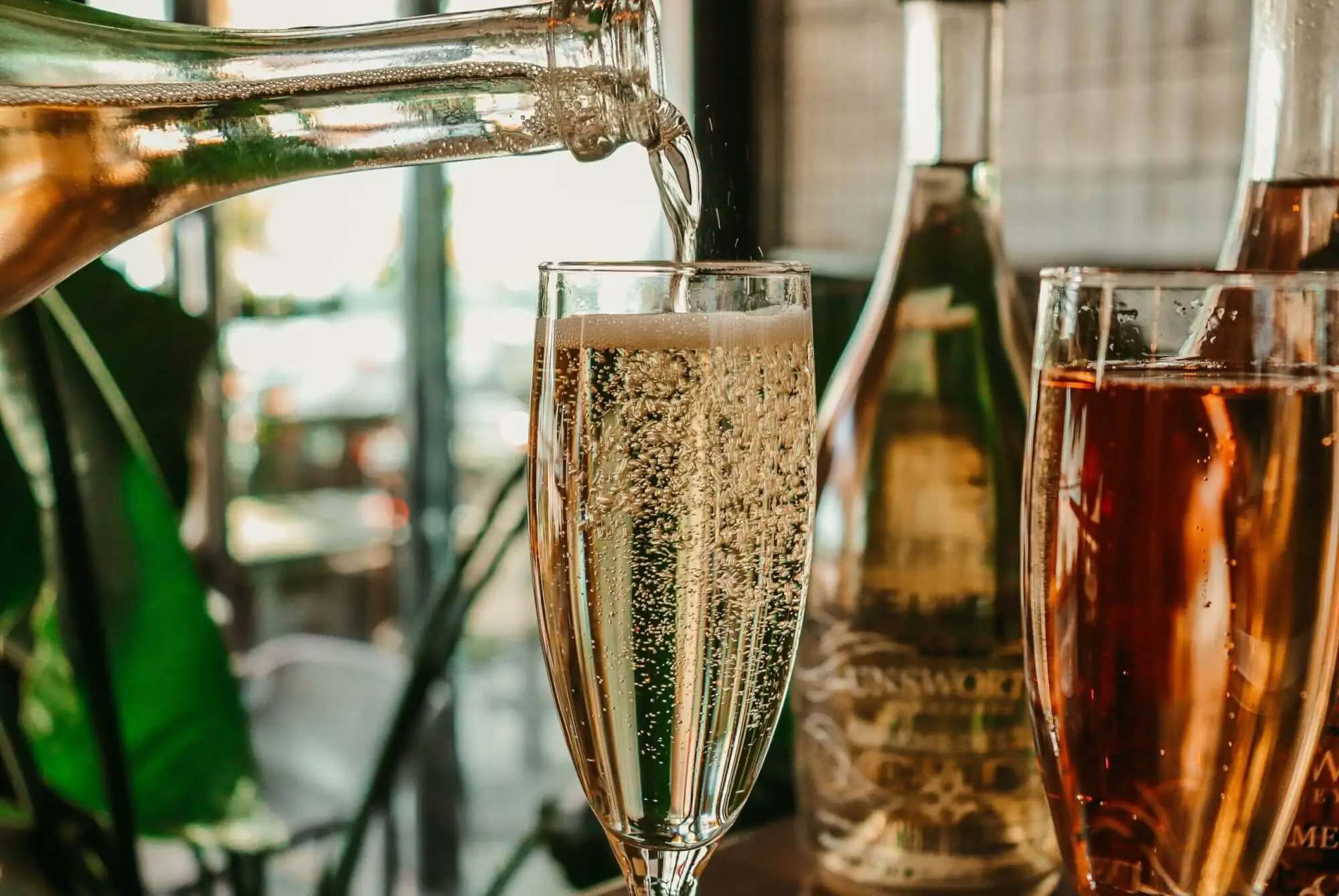New Product Launch: ClimateLens Monitor Yield Outlook - see regional and location-specific yields on key commodity crops, updated weekly.Learn More
Himanshu Gupta • January 18th, 2023.

Every wine lover — or any layperson who has been to a wine tasting — knows how sensitive wine grapes are. They react quickly and drastically to the world around them: Good or bad weather conditions can make or break a wine. Because grapes are so susceptible to even the subtlest changes in climate, from temperature changes to water supply to air quality to sun exposure, they’re widely considered an “indicator crop.”
As the climate changes, the regions of the world suitable for growing wine grapes are likely to shrink by more than half in the near future — with studies showing up to as much as 85% of those lands no longer producing good wines. For example, climate change brings warmer temperatures, at which point wine grapes ripen more quickly, breaking down more acids and accumulating more sugar, meaning wines are sweeter and boozier. Climate change also brings more extreme temperature shifts, increasing the risk of frost damage and extreme heat, which can cut into yield. Additionally, it brings more frequent and severe storms, and diseases like powdery/downy mildew, grey mold, and trunk diseases, which flourish in excess moisture, affecting both plants’ and grapes’ quality and quantity. Plus, climate change-fueled events like wildfires cause smoke taint, ruining entire harvests.
Climate change impacts like these are often hard for people to wrap their heads around, so at ClimateAi, we like to make it more tangible — and what’s more tangible than understanding how climate change is affecting your favorite wines?
For context, there are 10,000 different varieties of grapes and hundreds of them are on the verge of extinction, due to climate change. By 2050, it’s possible that popular wine-making grapes like Chardonnay, Pinot Noir, and Merlot may become extinct, due to the pressures of climate change.
A good example is French Champagne, arguably one of the most famous wine regions in the world. In recent years, harvests have become wildly unpredictable. French wine accounts for €7.6B in exports, which equates to 16% of all wines sold worldwide; plus it employs half a million people and welcomes 24 million tourists every year.

Even though France enjoyed an exceptionally good harvest in 2022, the year before, growers had their smallest harvest since 1957. This was largely due to extreme weather events, such as a heat event that burned the vines in March, an early frost in April, persistent rains (which led to mildew), and destructive hail on numerous occasions throughout the season. The 2021 harvest cost France an estimated €1.9B in sales.
But it’s not all doom and gloom — some current wine-growing regions will stay more resilient in the climate-changing future.
We tasted emerging wines from areas like the UK, where warmer growing conditions are becoming ideal for sparkling wines, or Uruguay, where climate-resilient wine grape varieties like Marselan are being grown.
In fact, UK wines had a bumper crop in 2018. In a record first for the country, 15.6 million bottles of wine were produced. As the climate warms, giving more time to develop sugars in the grapes, this wine will become more elegant and complex. The 2019 vintage we tasted is even more refined than the previous year.
The UK wine boom has attracted the attention of other major Champagne producers, as the region of Champagne becomes more inhospitable, who are beginning to make investments in UK wines. Taittinger, for example, recently had its first harvest in the UK and is hoping to produce 300K bottles of UK sparkling wine by 2025. It’s part of a larger trend: Wine consultants are being sent to areas nearer the poles, such as Belgium, UK, Netherlands, Sweden, Tasmania, and Uruguay.
Other highlights from the tasting included the exploration of the mitigation techniques that grape farmers can use to ensure healthier harvests under climate-changing conditions — using ClimateAi’s platform, which forecasts challenging conditions and recommends adaptation practices. These techniques can be implemented to limit the impact of heat and sunburn to clusters, reduce competition for water under drought conditions, and lessen the effects of smoke taint during heat spikes.
Zooming back in on Champagne, for example, climate change mitigation is top of mind for all wine growers in the region. Terroir varies greatly within a small region and forecasts need to be localized for optimum results and to stay ahead of major climate events months and years into the future. With insight, wineries can capitalize on getting the most from their harvests, using mitigation strategies like: pruning; chemical applications based on forecasts; shade techniques (particle films, trellising, plant repositioning, reducing leaf removal); irrigation (over/under canopy sprinklers); tilling vineyard floors, releasing natural predators to control pests (ladybugs, birds, bats, etc.); using pheromone diffusers that confuse insects from mating; and introducing heartier rootstocks and/or grape varieties.
Varietal selection is a key mitigation and adaptation strategy for wine growers. Consider Marselan and

Bourdeaux. Developed in Languedoc in 1961, the Marselan grape is a cross-breed between Grenache and Cabernet Sauvignon, primarily used in wine blends. Marselan is known to resist the effects of a warming climate, diseases, and pests.
As of 2021, Bordeaux can contain up to 10% Marselan, keeping Bordeaux from becoming overly sweet and boozy as climate conditions change and maintaining its earthy minerality. It’s one of six newly approved grape varieties — and you know France doesn’t change anything unless they absolutely HAVE to.
Selecting varieties like Marselan can help preserve the qualities of classic regional wines. However, vines take 20-30 years to grow, so growers need a long-term plan to plant varietals like this.
Meanwhile, the grapes making up the classic Bordeaux blend (usually Cabernet Sauvignon, Merlot, and Cabernet Franc) respond poorly to climate volatility, which is increasing in Bordeaux’s historic vineyards. Often, earlier springs are making traditional varieties of Bordeaux grapes mature during the peak of summer, rather than in the fall, meaning the wines have more sugars, fewer acids, and worse aromas because they do not have the proper time to develop the necessary tannins and anthocyanins that give red wines their complexity.
However, it’s still at risk from other climate change impacts. In 2017, a frost wiped out 40% of the harvest in late April. Some large wineries near the mouth of the Gironde River in Haut-Medoc fared better than those further away from the river and further inland. Unfortunately, many smaller wineries lost 80-100% of their crops.
The situation with Bordeaux shows why it is so important to localize forecasting in-season based on a number of different factors like water (drought/flood), soil, heat stress, cold/frost, wildfire, precipitation, and wind.
Bernard Megrez, the famed wine producer, has recognized climate volatility from year to year and is very interested in how to mitigate the effects of climate change to maintain the classic Bordeaux flavor profile. He is particularly interested in getting ahead of the volatility in the long-term.
His vineyard, Chateau La Tour Carnet, is conducting experiments using electric heating cables along the vines to adjust them to the estimate of an additional 4 degrees Celsius by 2050 that scientists have predicted for the region. They apply this temperature change to 84 different grape varieties, including “forgotten” and “new” grapes (such as Marselan) to see how they withstand its effects. The vineyard also adjusts its fermentation and barreling process to these changes to see how it will effect future winemaking techniques.
A climate-change future can still hold the fine wines we know and love. With proper planning and preparation, we don’t have to enter a Prohibition. With better data and analytics, we can make more informed, effective decisions to protect food and drink, livelihoods, and lives.